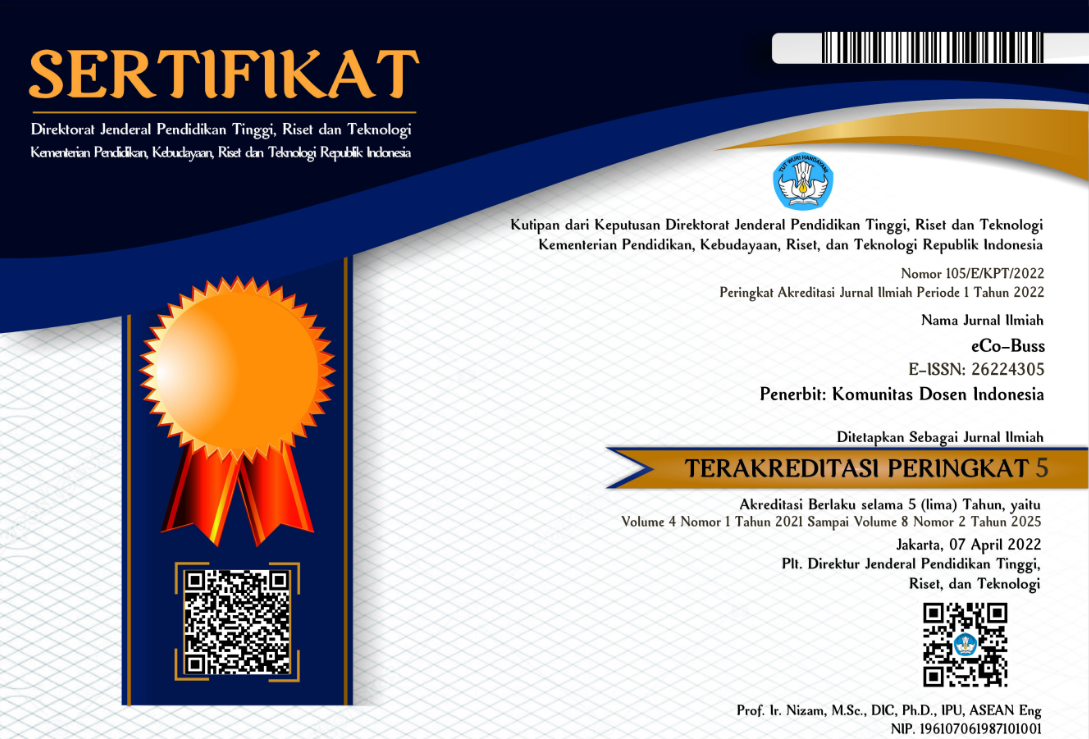Faktor-Faktor Yang Mempengaruhi Mahasiswa Akuntansi Terhadap Pemilihan Karir Sebagai Konsultan Pajak
DOI:
https://doi.org/10.32877/eb.v6i3.1102
Keywords:
Perception, Professional Recognition, Self-Efficacy, Career Selection
Abstract
A tax consultant's profession requires individuals who possess a strong work ethic, are willing to take on risks, have a capacity for acquiring new knowledge, and, most importantly, can comprehend and apply tax regulations. The selection of an individual's profession is a protracted and multifaceted process. Perception, professional recognition, and self-efficacy are influential factors in individuals' job decision-making. This study employs a quantitative approach, utilizing the Slovin algorithm to choose a sample of 93 respondents. The findings indicated that the perception variable had a notable impact on the selection of a career as a tax consultant, with a t count of 4.712, which exceeded the critical value of 1.987 from the t table. Professional recognition has a substantial impact on the career choice of a tax consultant, as evidenced by a t count of 3.216, which is greater than the t table value of 1.987. Self-efficacy strongly influences the decision to pursue a career as a tax consultant, as evidenced by a t count of 2,348, which exceeds the critical value of 1,987 from the t table. The variables of perception, professional recognition, and self-efficacy all have a simultaneous and considerable impact on the career choice of becoming a tax consultant. This is evidenced by the F statistic of 64.549, which is larger than the critical F value of 3.09, and a significant p-value of 0.000, which is less than the threshold of 0.05.
Downloads
Downloads
Published
How to Cite
Issue
Section
License
Copyright (c) 2024 Lorenia Pranata, Poniman Poniman

This work is licensed under a Creative Commons Attribution-ShareAlike 4.0 International License.






 DOI :
DOI :
 Abstract views: 220
/
Abstract views: 220
/  PDF downloads: 319
PDF downloads: 319

